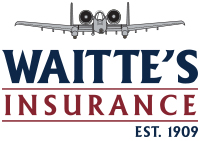 Many businesses and many employees get confused about the differences between Worker’s Compensation Insurance and Employers’ Liability Insurance. For a business, it’s important to not only know the difference between these two policies but also understand that they go hand-in-hand and are sold together to effectively protect the business and its employees.
Many businesses and many employees get confused about the differences between Worker’s Compensation Insurance and Employers’ Liability Insurance. For a business, it’s important to not only know the difference between these two policies but also understand that they go hand-in-hand and are sold together to effectively protect the business and its employees.
Workers’ Compensation Insurance:
If an employee is injured on the job or if the employee becomes ill from a work-related illness, they will need Workers’ Compensation Insurance. This will require their insurance company to compensate those who are injured or stricken ill based on the insurance policy that they have in place at the time of the incident. The employee, however, must provide proof that the injury occurred while performing job-related duties, but it is not necessary for them to prove that the employer was at fault in any way due to negligence.
There are five types of Workers’ Compensation benefits:
– Medical Care
– Temporary disability benefits
– Permanent disability benefits
– Vocational rehabilitation services
– Death Benefits
Pain and suffering is not covered with this insurance.
Employers’ Liability Insurance:
This insurance is a protection for a business against lawsuits due to employment-related injuries or illnesses. A lawsuit can be filed by an employee, family members, or third parties. Employers’ liability insurance is additional coverage above what is covered in Workers’ Compensation Insurance.
A workers’ compensation claim does not require a proof of negligence, but employer liability claims do. The employee is required to prove that the injury they suffered was caused in some way due to negligence from their employer. This can be as simple as not providing protective eyewear or earplugs in work environments where those safety devices might have prevented loss of sight or hearing.
There are four elements to this proof:
– The employer has a duty by law to protect their employees from undue harm or injury.
– The employer must have committed some action or omission of action that did not prevent the harm or the injury.
– The employee was injured as a result directly due to the employer’s failure to prevent the harm or injury.
– There must be evidence that the injured employee suffered some sort of provable damages that resulted from the accident. This could be medical bills, lost wages, pain and suffering, or other problems and issues resulting from negligence.
Both Employer Liability and Workers’ Compensation Insurance offer protection of the assets for a business and protection for employees. For additional questions regarding workers’ compensation laws in Connecticut, click here.
